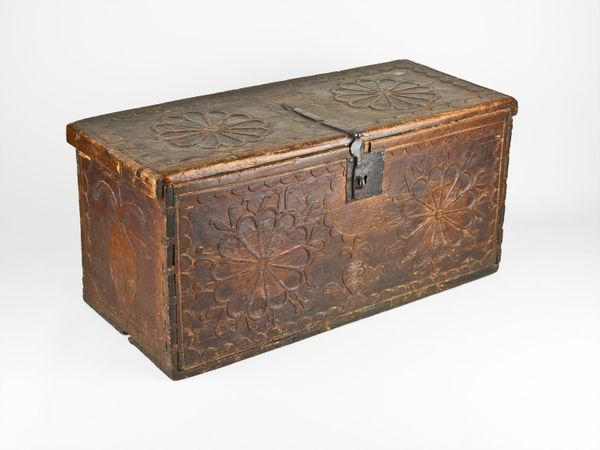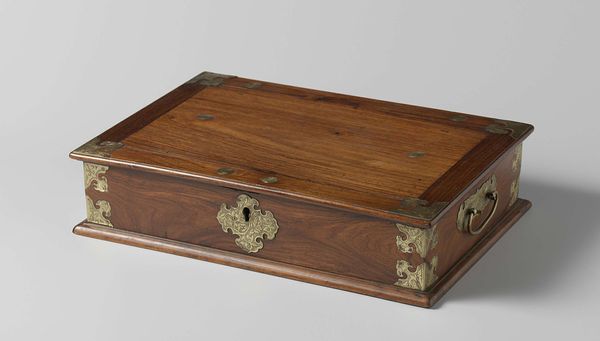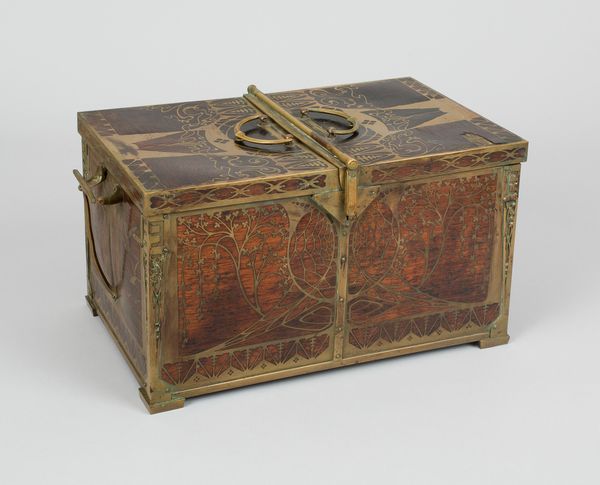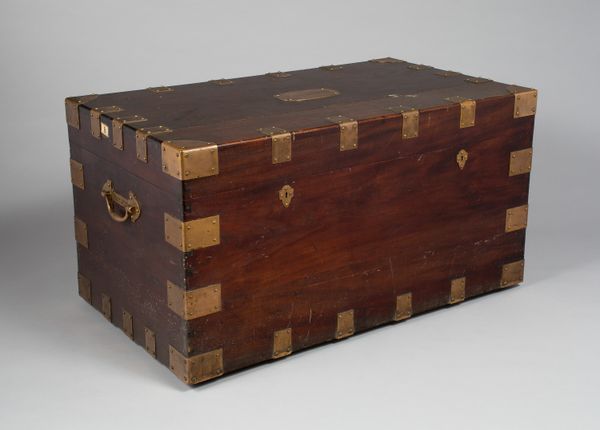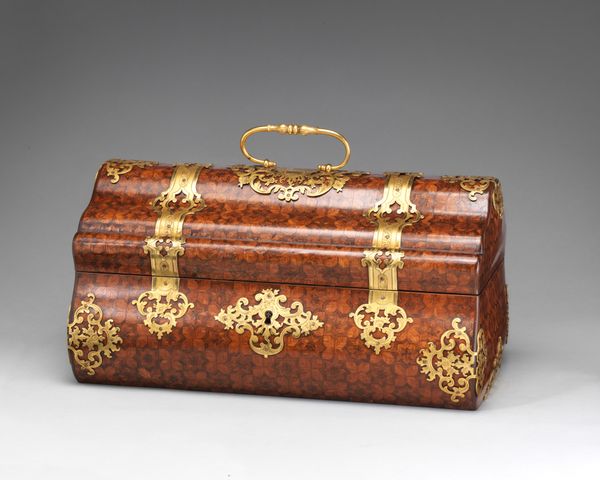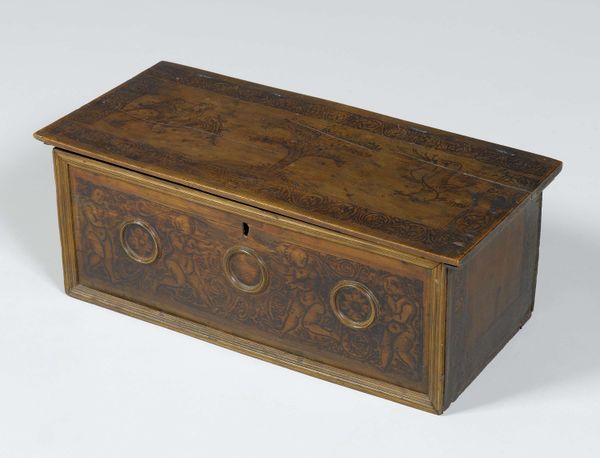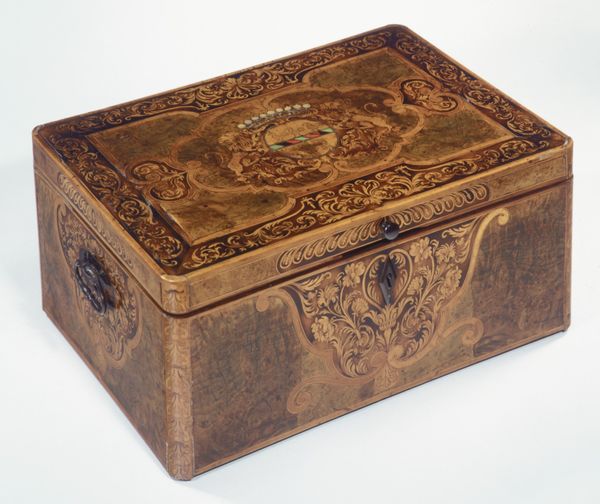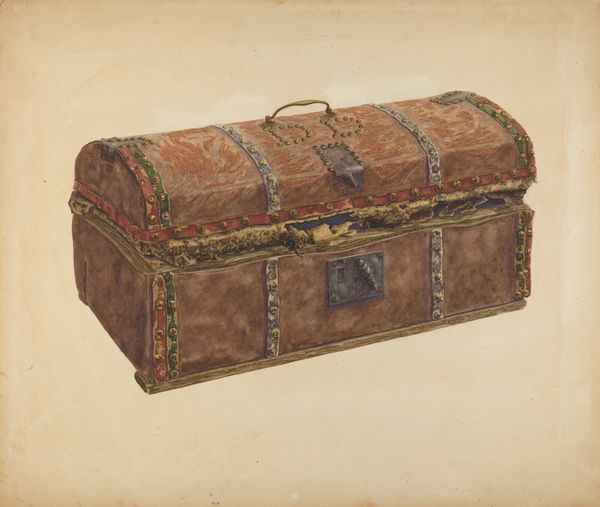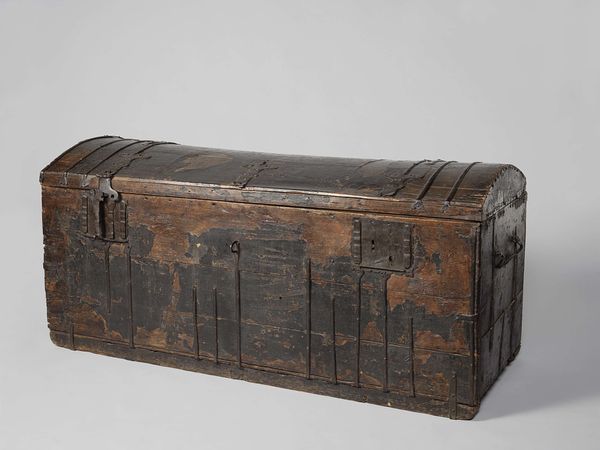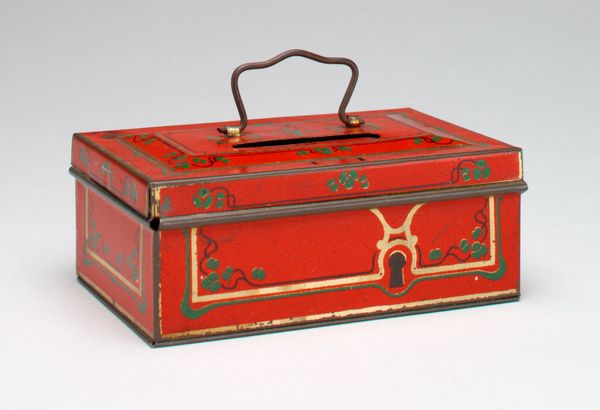
metal, wood
#
metal
#
wood
#
product photography
#
decorative-art
#
rococo
Dimensions: height 13 cm, width 33.5 cm, depth 24.5 cm
Copyright: Rijks Museum: Open Domain
Curator: Oh, I'm instantly drawn to its understated elegance. It's a box, clearly, but there’s a kind of silent story whispered within those leather confines, don't you think? A journey in transit perhaps? Editor: Absolutely. What we’re looking at is a "Leather Case for a Service" created circa 1765-1770. The leather is accented by both metal and wood, revealing a little about luxury practices from this period. It gives material form to concepts of access, hierarchy and trade routes of objects used during that time. Curator: Access for whom, exactly? Was this somebody's high-society picnic basket? I mean, I can imagine elegantly gloved hands opening it up to reveal, I don’t know, delicate porcelain teacups. Editor: More likely it would be owned by someone of high status who possessed influence. Tea, coffee, spices. These luxury objects were steeped in colonial legacies of wealth extraction. What might be inside, whether the object, tool or even artwork, always implies class status in the Rococo era. Curator: A box of class consciousness, alright. And there's something deeply appealing about that aged patina and the worn edges, each scratch probably tells its own story of carriage rides and forgotten picnics. I feel the romance in it. But you’re right, these stories don't begin with the aristocracy that enjoys them, of course. Editor: Precisely! The gold trim is such an emblem of that era and class too. Consider how this ornate touch signifies the appropriation of wealth acquired by otherized labour! Even the materials tell us how connected these so called private moments are connected with a deeply public extraction. It can also speak to the gendered dynamic of consumption at play: many luxurious containers served a predominantly feminized clientele. Curator: It almost feels voyeuristic, peering into someone's forgotten boudoir from 1770. Perhaps this box can remind us to look critically, imaginatively and compassionately at even the simplest object, and where its many beginnings can tell a broader story! Editor: Well said. Seeing this "Leather Case," hopefully helps us examine not only an individual artifact but the interconnected histories it embodies, pushing us to consider the unseen laborers behind such luxurious display, and the complex networks of power and extraction at its foundation.
Comments
No comments
Be the first to comment and join the conversation on the ultimate creative platform.
